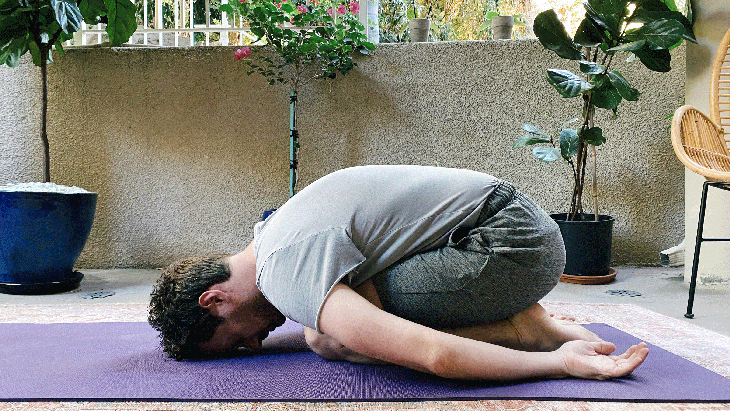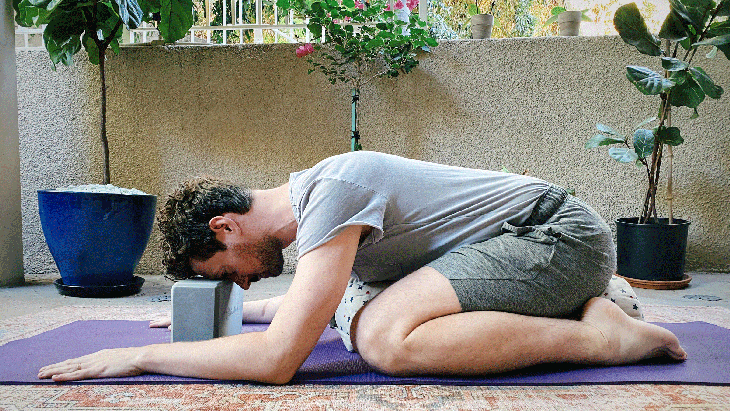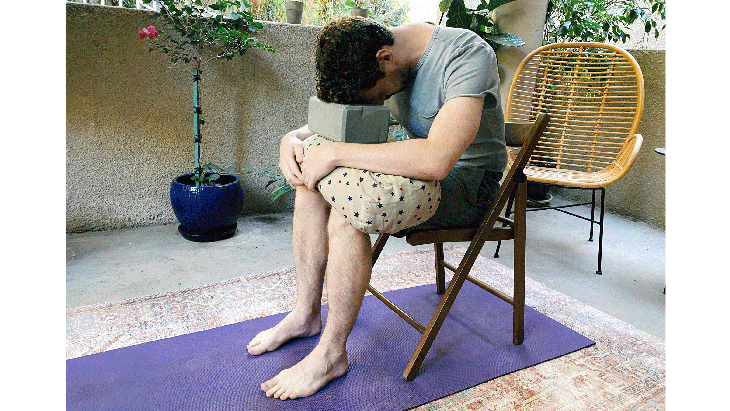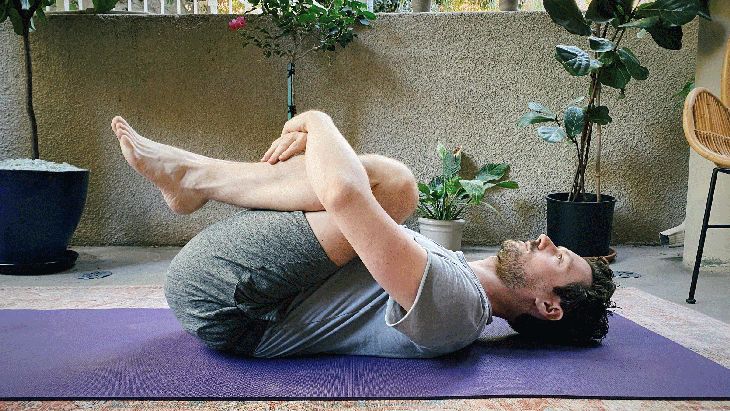4 Ways to Practice Child’s Pose
This article originally appeared on Yoga Journal
Have you ever been in yoga class and the teacher tells you to "rest" in Child's Pose...but all you can think to yourself is, "This pose does not feel restful to me!"
Just because a certain position feels restful to one person does not mean everyone else will have the same experience. And even if you feel physically at ease in a position, you might not feel emotionally comfortable there.
In the traditional version of Balasana, you kneel with your shins on the mat, your toes pointing behind you, before you sit back on your heels and lean forward to bring your chest closer to your thighs. Your forehead rests on the mat and your arms can rest at your sides or alongside your ears.
The "resting" pose stretches your lower back, buttocks, and the front of your ankles and, for some, it can be a soothing and calming pose that's helpful when we feel stressed or overwhelmed. It can be a contemplative pose, one that allows you to shut out the outside world and turn inward to honestly check in with how you are feeling in that moment.
But this version of Balasana can be particularly challenging for anyone who experiences tightness in their lower back or buttocks, needs to accommodate limited mobility in their ankle or knee joints, or move in a bigger body. The good news is that there are many variations of the pose that allow you to experience a similar shape as Balasana, so you still stretch the muscles of the back and buttocks and can potentially access the contemplative quality of the pose.
Tip
Teachers, be aware of your own personal bias when teaching a particular pose, whether you're partial to it or feel negatively toward it. Be careful not to tell people what they should experience. Instead, allow them to be with their own experience.
4 ways to practice Child’s Pose
Preparation
Although a preparatory pose isn't essential before Child's Pose, Paschimottanasana (Seated Forward Bend) helps prepare the spine and buttocks. Also, supported Virasana (Hero Pose) with a block or bolster between your seat and heels can help prepare your legs for Balasana, although some find this pose to be more challenging than Child’s.

1. Traditional Child's Pose
Start in Tabletop. Bring your knees together or allow them to come wide as the mat. Bring your big toes to touch in the center of the mat. Shift your weight back so that your seat moves toward your heels and fold your abdomen moves toward your thighs. Lower your forehead to the mat in front of you and either bring your arms by your sides, palms up, or reach your arms forward palms down in Extended Child's Pose.

2. Child's Pose with a bolster and a block
This variation creates more space for your torso and can be particularly accommodating if you have reduced mobility in your knees and/or ankles.
Start in Tabletop Pose. Bring your knees at least hip-distance apart and bring your big toes together to touch. You have the option to place a folded blanket under your knees and under the front of your ankles to add some cushioning. Place a bolster lengthwise down the center of the mat with the near end between your legs. Situate a foam block about a foot in front of the far end of the bolster. Shift your weight back so that your seat moves toward your heels and the front of your abdomen rests on the bolster. Rest your forehead on the block. If your hips do not reach your heels, you can place an additional folded blanket or cushion between your seat and your heels.

3. Child's Pose with a chair
This variation is an option if putting pressure on your knees or ankles is not an option for you or if getting down to the floor and back up again is challenging. It also works well in any chair yoga sequence.
Still comfortably in a chair with your ankles under your knees. Place a bolster, cushion, folded blankets, or foam blocks on your lap. Bring your forearms on the props and slowly fold forward until your forehead rests comfortably on your forearms. You always have the option to adjust the height of the props to find the most comfortable position.

4. Reclining Child's Pose
The supine variation of Child's Pose allows you to stretch along your back body without putting pressure on your ankles and knees. Come onto your back, bend your knees and draw your knees toward your chest and your heels toward your glutes. Bring your hands to your shins to hold your position with your arms. Slightly tuck your chin and draw your forehead toward your knees while keeping your neck at ease.
See also: Why Is Child’s Pose So Insanely Calming?
About our contributor
Andrew McGonigle has studied anatomy for more than 20 years. After initially studying to become a doctor, he moved away from Western medicine to become a yoga and anatomy teacher. He shares his knowledge of the body and the ways it moves in yoga teacher training courses throughout the world and leads his own Yoga Anatomy Online Course. His second book, The Physiology of Yoga, was published in June 2022. To learn more about Andrew, check out doctor-yogi.com or follow him on Instagram @doctoryogi.
For exclusive access to all of our fitness, gear, adventure, and travel stories, plus discounts on trips, events, and gear, sign up for Outside+ today.

